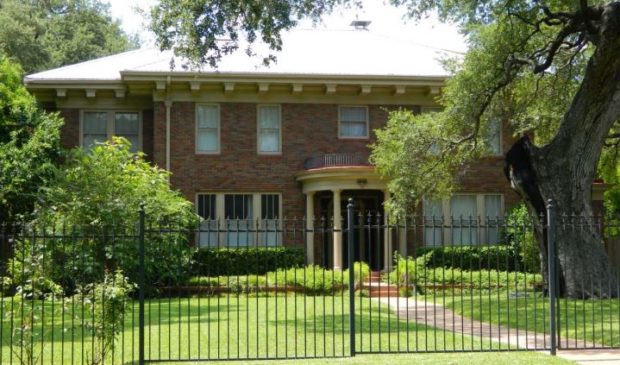ZAP considers West Austin historic zoning
Wednesday, August 29, 2018 by
Elizabeth Pagano Going against the wishes of the property’s owners and their neighbors, a majority of the Zoning and Platting Commission endorsed a bid for historic zoning in Old West Austin at its most recent meeting.
Though it wasn’t enough for a recommendation, commissioners voted in favor of the zoning change for the 1923 Bryson-Krueger-Critz House at 1602 West Lynn St. in a vote of 5-3-1 with commissioners Jim Duncan, Bruce Evans and Nadia Barrera-Ramirez voting against and Commissioner Abigail Tatkow abstaining. Commissioners Sunil Lavani and Ann Denkler were absent.
The house is a contributing structure in the Old West Austin National Register District, and the city’s Historic Preservation Office and Historic Landmark Commission also supported making the home an individual landmark. Opposing the change, however, were the homeowners and neighbors, who have two valid petitions against it.
Homeowner Jay Riskind told the commission that he met his wife in Beijing, though he is from Texas and had always intended to return.
“We chose not to buy property in China because we knew, as foreigners, we would be up against a system that was totally unfair. We didn’t expect to come to Austin, invest in the property of our dreams, and sort of be on the same end of that process. But that’s how it feels right now,” he said.
Riskind said the Historic Landmark Commission meeting “felt quite extreme.”
“They were picking apart every design aspect and wanting us to keep everything original. There was really no flexibility in the conversation we were having, and it felt quite unfair,” he said.
Glen Coleman, who was representing the Riskinds, disputed the historic significance of the home.
“This was a terrible house to choose,” he said. He noted that the case, unusually, had two valid petitions against the historic rezoning. One was from the owners and the other from the neighbors. “You will never see that. Particularly in Old West Austin. … They don’t like this house. It’s just not that exciting.”
Historic Preservation staff, however, determined the home met the criteria for individual landmark status based on its architectural significance and its historic associations. The house was brought to the attention of the Historic Landmark Commission when the Riskins requested a partial demolition permit for their plan to add a half-story to the home, creating a line of dormers, replacing the windows and changing the front portico and adding additions to the side.
“The landmark commission felt very strongly that this would make the house, which is contributing to the historic district now, non-contributing. It would also foreclose the opportunity for any future owner to landmark the house,” noted Historic Preservation Officer Steve Sadowsky.
He ran through the history of the house whose residents included Richard Critz, who was an associate justice of the Texas Supreme Court in the 1930s and 1940s. Coleman questioned whether that stature warranted a landmark. Commissioner David King, who had done his own research, later highlighted that Critz had prosecuted members of the Ku Klux Klan, and said that, to him, “that’s very important.”
In addition, Cherise Bell, who is an architectural historian hired by the Riskinds, testified that the home is, in fact, a poor example of the Italian Renaissance Revival style and is missing several components of the style, including the red clay tile roof. She also noted that the porch is not original to the home.
Sadowsky stood behind his opinion.
“This is a house that was designed for the people who lived there, the class of people who lived there. And that’s the story that it tells,” he said. “It tells what past generations viewed as the ultimate in residential architectural design. … It doesn’t really matter to me what neighbors or anyone else thinks about this.”
Commissioner Bruce Evans disagreed. “We’re at the zoning commission. We listen to every case and hear what the neighbors think,” he said. Evans also questioned whether the house, preserved, would tell its story visually, saying, “If you want to tell that story, write it in a book and hand it out to people.”
Due to the two petitions against the change, a supermajority of City Council (nine Council members) must approve the zoning change for it to take effect.
This story has been corrected. It originally stated that the historic zoning was recommended, which would require six votes, not the five votes cast. Photo courtesy of the city of Austin.
The Austin Monitor’s work is made possible by donations from the community. Though our reporting covers donors from time to time, we are careful to keep business and editorial efforts separate while maintaining transparency. A complete list of donors is available here, and our code of ethics is explained here.
You're a community leader
And we’re honored you look to us for serious, in-depth news. You know a strong community needs local and dedicated watchdog reporting. We’re here for you and that won’t change. Now will you take the powerful next step and support our nonprofit news organization?






